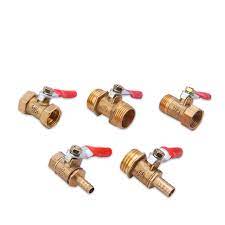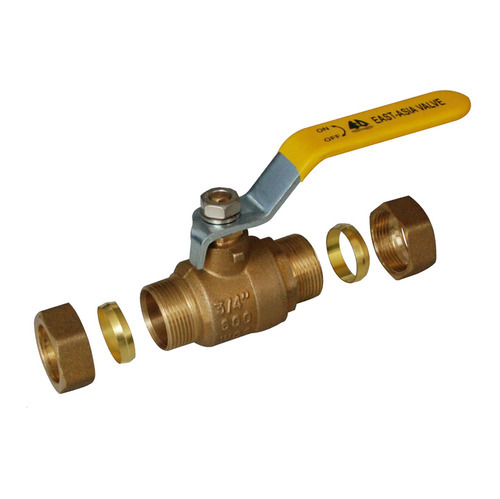COPPER VALVES
COPPER VALVES MANUFACTURER
The Apexia Metal Is Provide Copper Ball Valve Manufacturer
Copper valves are used in low amplitude applications. range from 3/8 drag to 2 inches and therefore valve activities differ based on valve type. Copper can be a normally erosion-safe material with high flexibility and formability. Copper valves are used in liquid transmission structures such as radiators. high-temperature water lines, water lines, and other commercial and homegrown applications. Copper radiator valves are used in cars and engines to flow coolants and water through the road. Valves prevent reversing on the frame. The pressure factor limits of copper valves are lower compared to mild steel valves.
Conductor Manufacturer of the copper radiator and float valve
There are several types and methods for valve activity. The copper tube valves guarantee the unidirectional progression of the fluids. The valves are impervious to mild acids and steam. Erosion clogging against steam causes them to be used in steam and. bubbling water applications.
COPPER VALVES MANUFACTURER IN INDIA
What are copper valves?
The various types incorporate copper ball valves that. use a ball within the valve body to regulate the progression of hot fluids. The valve is also perhaps the most commonly used valve design. The plan can also have multiple valve points. Suitable point valves are used in open conditions. where copper calculated radiator valves are valuable in tight space applications.
Specialized Specification of Cu Alloy Knife Gate Valve
Plan standard: API, ASME, EN, ISO, JIS, DIN, BS, GB
Association Type: flange, wafer, lug
Pressure factor range: 150LB, 1.0MPa ~ 25.0MPa
Size range: NPS 3/8 “- 40”, DN10 ~ DN1000
Drive: handwheel, gear, electric, pneumatic actuator
Features of Copper Alloy Knife Gate Valve
The replaceable seat ensures easy attachment.
Planed with straight type, low flow resistivity, and a more protected application.
Steering wheel with hostile to the destructive plastic cover. which acquires a great appearance and handling advantage.
Copper valve selection criteria
Valve diameter (nominal sizes)
Transmission speed
Middle rate
Medium temperature
Work pressure
Work temperature
Association
Actuator type
Cu valve standard specification
Plan standard: API, ASME, EN, ISO, JIS, DIN, BS, GB
Association Type: flange, wafer, lug
Pressure factor range: 150LB ~ 300LB, 1.0MPa ~ 4.0MPa 、 JIS10K ~ 20K
Size range: NPS3 “- 48”, DN50 ~ DN1200
Drive: lever, gear, electric, pneumatic actuator

COPPER VALVES SUPPLIER
Copper-nickel valves are made up of various kinds of copper-nickel material grades. Copper-nickel materials are also referred to as cupro-nickel. Cupro-nickel valves function as inlet valves, globe valves, ball valves, and check valves. These various types offer various types of administrations. The copper-nickel valve has an empty ball with neat openings.
The ball is often rotated to land the openings with the road to keep the valve in the initial position. The copper-nickel inlet valve features a gate worked with a threaded stem that is linked to a handwheel. Because the handwheel rotates. the threaded stem lowers or raises the inlet in and out of the seat by closing and opening the valve separately. The 90/10 Copper Nickel valve is composed of 90% copper and 10% nickel material organization.
This structure allows it to have tons of abrasive clogging. particularly in ocean water. The use of MIL-C-20159 grade valves can be found in seawater. ocean, transportation buildings, and saline water filtration plants. There are different grades and distinctive details.
for example, the ASTM b369 c96400 70/30 copper-nickel valve which is in size and width. Valve dimensions range from ½ drag to 24 inches depending on determination and applications. The uns c96200 90-10 cu-ni valves are probably. the most commonly used in seawater applications. In addition, the fabric has great resistance and resistance to temperature.
COPPER VALVES SUPPLIER IN INDIA
High malleability and strength copper nickel valve manufacturer in India producer in India
Brilliant protection against disintegration
Intrinsic protection against biological contamination
Bright erosion in seawater
Excellent welding and fabrication properties.
Ball valves are strong, robust. and shut off flow safely even after being idle for significant periods. In this sense, they are regularly used as extraction valves for gas and liquid streams. Ball valves are also easy to calculate. This, in addition to its accessibility during a variety of valuable material alternatives. has driven its unlimited use.
Engineered plastics offer a valuable option for metal ball valves. Plastics allow valves to fulfill particular prerequisites that metal cannot. Metal valve bodies also enjoy benefits that plastics cannot coordinate. Making the right valve body material decision, regardless of metal or plastic. starts with knowing plan needs, industry-specific guidelines, pressure ratings, and liquid similarity.
Lower cost
Lighter weight
Longer support life
Better consumption obstruction
Better protection against cavitation.
More extensive synthetic similarity
Higher burst pressures
Lower warm extension
More prominent pressure opposition
Better shock pressure clogging
Ready to affect higher temperatures
When metal is chosen by the higher press factor and temperature prerequisites. the most important ideal decision for a valve body, metal. and hardened steel is a normal option to choose from.
The metal can be a compound of copper and zinc. It is one of the softer metals used. for metal valve bodies, however, this reality is often somewhat misleading. Metal valves are noted for their robustness. and have higher pressure factor ratings than everything except exceptionally designed plastics. Metal can also affect and retain more heat than plastics. Metal has great flexibility or versatility. and this makes it less expensive and easier to shape, stretch and. shape unequivocally without breaking. breaking or cracking.
Despite zinc and copper. various plans for the metal have different measurements of various metals. added to enhance beneficial properties. These incorporate formability, strength, resistance to erosion, and robustness. Perhaps the most important of the metals. added to metal combinations is lead or lead substitutes such as bismuth. silicon, and selenium. These make metal exceptionally simple to mold using fast machining procedures.
When considering the impacts of the ingredients of the combination of metals. keep in mind that the following qualities, as a rule, are connected here and there. Adding a larger amount of 1 metal can strengthen a metal’s bond and. at the same time, decrease its machinability. the next metal would be more expensive to mold and fit. the result can be a wide range of brass or copper-zinc combination types or plans to sail.
The metal commonly used to make valve bodies has been metal-free machining (UNS C36000. or CDA 360) or lead-free.
Mild steel is the non-exclusive classification name for a wide range of iron and. carbon combinations that contain essentially 10.5% chromium by weight. By adding chromium to the steel flats, the steel becomes more grounded. It also appears to be safer for consumption. Like brasses, modest amounts of other components and. composite metals could be added to enhance the design and. properties of selected hardened steel.
The hardened steels typically used to make valve bodies are 304 treated. steel and 316 tempered steel. Type 304 contains 18% chromium and 8% nickel, while type 316 contains 16% chromium, 10% nickel, and a couple of molies.
Most expensive metal
Great heat conduction
Pressure factor evaluations up to 10,000 psi
Phenomenal synthetic and erosion clogging
Valuable for temperatures up to 1700 ° F (926.7 ° C)
More troublesome and more expensive to mold and frame
More affordable metal
Incredible heat conduction
Pressure factor rates up to 3000 psi
Great opposition substance and consumption
Useful for temperatures below 400 ° F (204.4 ° C)
Much simpler and cheaper to mold and frame.
Both brass and hardened steels are important and. useful material decisions for valve bodies. all deliver unmistakable benefits and ideal jobs. TE
About
We are one of the leading manufacturers of optimum quality Pipes & Pipe Fittings. Their high tensile strength, seamless finish and resistance to corrosion, make these pipes highly demanded.
Register Office
Contact
(+91) 9167472806
apexiametal@gmail.com
export.apexia@gmail.com
Follow
Copyright 2021 © Apexia Metal – All Rights Reserved || Developed & Maintained by Adsense Networks

